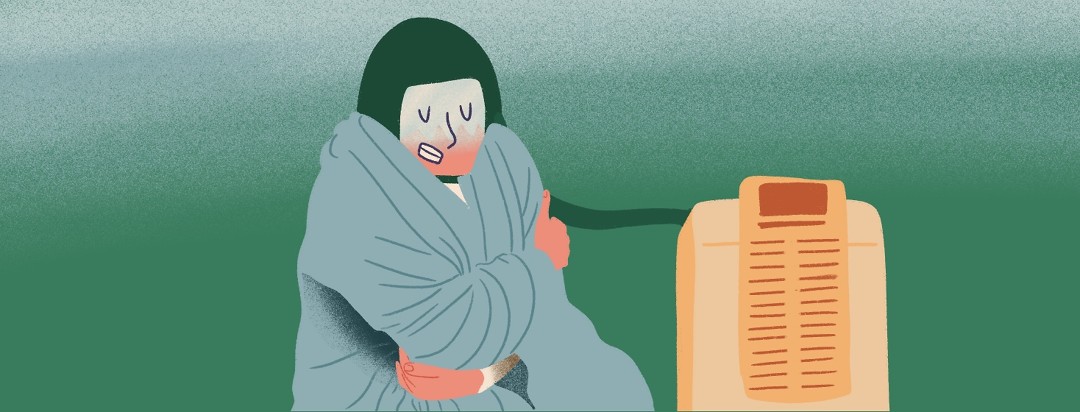Cold Capping: A Guide to this Brave, New, and Very Cold World
Cold capping...sounds odd, doesn't it? For those unfamiliar with cold capping, also known as scalp cooling, it is a technique used to help preserve scalp hair during chemotherapy infusions.
As a "cold capper" myself, I will be discussing the process in this piece, and also welcome any advice other cold cappers may have to offer those new to this Brave, New, and Very Cold World.
Preserving my hair
When I learned that I would be starting new chemotherapy that causes hair loss, I decided that I wanted to preserve my hair, if at all possible. I had already lost my hair once before and didn't want to lose it again. At least, not now.
We all have our reasons. Some people don't mind losing their hair. Others try to keep it at all costs. For me, I have just relocated, am getting settled into our new town, am making friends, and dating.
This is really not a time in my life when I particularly want to be bald again. And so, I was prompted to explore the brave, new, and very cold world of cold capping. Tomorrow will be the seventh cold capping session, and after a few laborious experiences, I have learned a few tips and tricks to make it easier.
Accept that it will be cold, very very cold
While I went into my first infusion knowing it would be cold, I had not mentally or physically prepared myself for just how cold it would truly be. It was so cold that I nearly ripped the cap off of my head and gave up during the first thirty seconds. Accept that the cap on your head will be freezing cold before you even entertain the process further, and know the frozen cap will stay on your head for several hours.
Understand the process
Do you still think cold capping is for you? Okay, let's discuss how it all works! Some chemotherapies cause hair loss, and the purpose of the cold cap is to freeze the hair follicles on your head. This prevents the medicine from reaching the area, thus preserving your hair.
A success rate is considered keeping 50 percent of your hair, and "shedding" of hair afterward is very common. Most cold cappers still lose some hair, and the cold cap will not preserve your eyebrows, eyelashes, or any other hair aside from what is on your scalp.
How does the cold cap machine work?
I use the Dignicap Delta machine, which is kept at my cancer center. I had to purchase my own equipment, which is a Dignicap Delta cap that I wear on my head. This also has tubes protruding out of it that connect to the machine.
A Dignicap Deltra-trained nurse sets the machine to six degrees. Once it cools, the nurse helps fit the cap to my head and connects the tubes to the machine. This sends the coldness to my cap, which freezes it. The infusion starts about forty minutes later, giving my hair follicles a chance to freeze.
What does the patient do?
While the machine is cooling, I get prepared.
- I plug in my electric blanket from home. I do this so by the time the machine is cold, my blanket is hot. My infusion chair also has heat, so I crank that up, too!
- At this time, I gather all of the things I need to keep by my chair. This includes my phone, charger, food, drinks. It can be cumbersome to move around with an IV pole and while being hooked up to a cold cap machine!
- While things are respectively cooling and heating up, I go to the bathroom and prepare my hair to be capped. Using a spray bottle, I wet my hair completely. The wetter your hair is, the better the cap works.
- By the time I get back, the cold cap machine is almost ready to go. At this time, I ask for my pain medicine to help tolerate the coldness. I do not have the Benadryl IV until after the cold cap is fitted to my head. This is to ensure it fits properly. The better the fit, the better the cap works. If there are "air bubbles," you may lose hair in those spots.
- Once the nurse and I fit the cap to my head, they administer the Benadryl IV. I put warm hospital blankets on my chair, the nurse helps wrap me up in my electric blanket, I recline, and try to sleep for as much of my infusion as possible!
- After the infusion is over, you will continue to wear the cold cap for another thirty minutes. If it is taken off too soon, it can rip the hair out from frostbite on your scalp. You literally need to defrost and thaw during this time.
What if my hospital doesn't have a cold capping machine?
Unfortunately, many hospitals do not offer machines on-site. Fear not! There are companies, such as Penguin that offer a dry ice option. With this technique, you bring a support partner with you who manages to replenish dry ice to your cap several times during your infusion. For more information, please see the link provided above.
Cold capping can be a daunting task, but with the right equipment, techniques, and assistance, it can be a viable option for hair preservation.
Have you cold-capped? What advice would you add? Or are you considering cold capping?
Editor’s Note: We are extremely saddened to share that on Friday, October 29, 2021, Danielle Thurston passed away. We know that Danielle’s voice and perspective continue to reach so many. She will be deeply missed.

Join the conversation